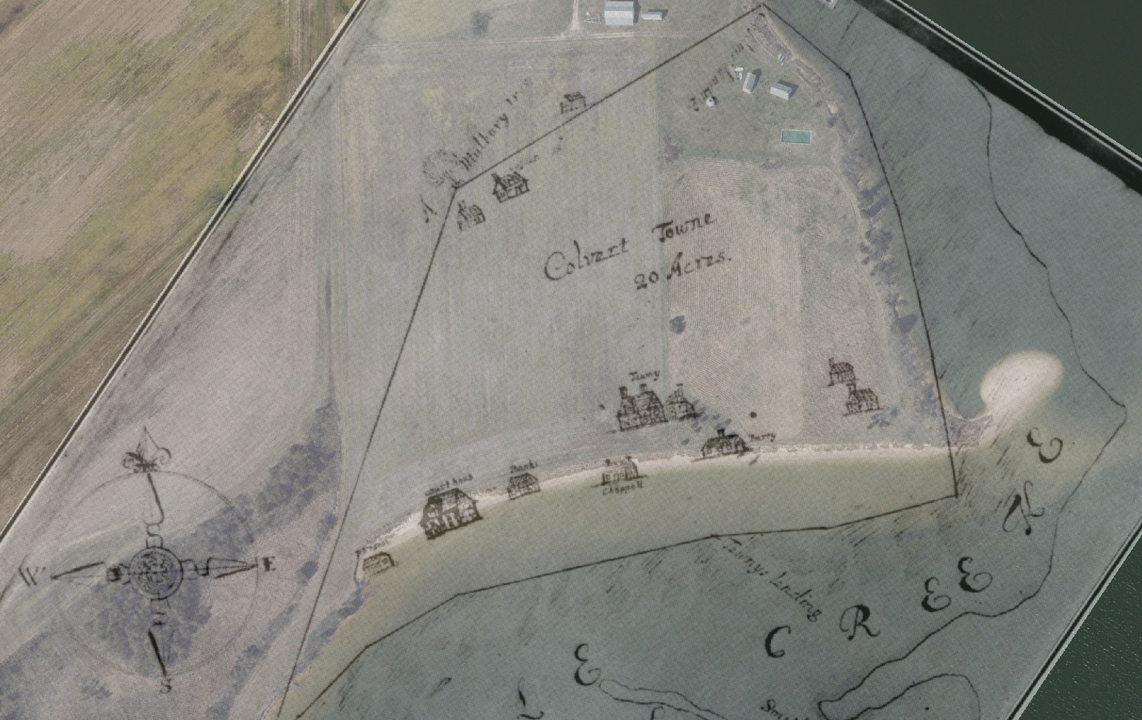By Kirsti Uunila, RPA, Calvert County Historic Preservation Planner
For the past two summers, MHT archeologists have partnered with the Archeological Society of Maryland (ASM) and Calvert County to investigate the Calverton Site on the shore of Battle Creek to search for what remains of the seventeenth century town. Calverton, also known as Battle Town, was the first seat of Calvert County government. Established around 1668, it was abandoned sometime after the court was relocated to Prince Frederick in 1724. The town site has been in agriculture ever since. Battle Creek has eroded the Calverton Site with an estimated loss of more than 50 meters of shoreline. Using a plat of the town drawn in 1682 (see map), archeologists concluded that some of the town is still on land, including the first home of Michael Taney and other buildings.

An area near the Taney house is believed to have been a dependency or outbuilding related to the dwelling. It contained numerous artifacts from the seventeenth and early eighteenth centuries. One was a large wine-bottle fragment bearing a broken seal with the initial ‘M’. Michael Taney’s, perhaps? Several small features were excavated in the dependency, including an apparent line of postholes. Two of these postholes were situated approximately three feet apart, suggesting the presence of a door. The most notable artifact found was on the edge of one of these postholes. It is a James I silver shilling with a mint mark indicating it was made in 1604. Since the town was not established until sixty years after that, the coin had had a long journey and was likely to have been a treasured object. In “archeologist speak” it had been “curated” by its owner well beyond the date it was minted. Its placement in a posthole that may have held a doorpost suggests a deliberate act, possibly to bring good fortune to the building and its inhabitants.

The artifacts and records of the second season are being analyzed now and we hope to learn more about the people who lived, worked, and traded in the Colonial port town. Calvert County proposes continuing work at the site and will use ground-penetrating radar (GPR) this spring to locate cellars, hearths, and other features that may be in imminent danger of erosion, and to investigate more of the site.

